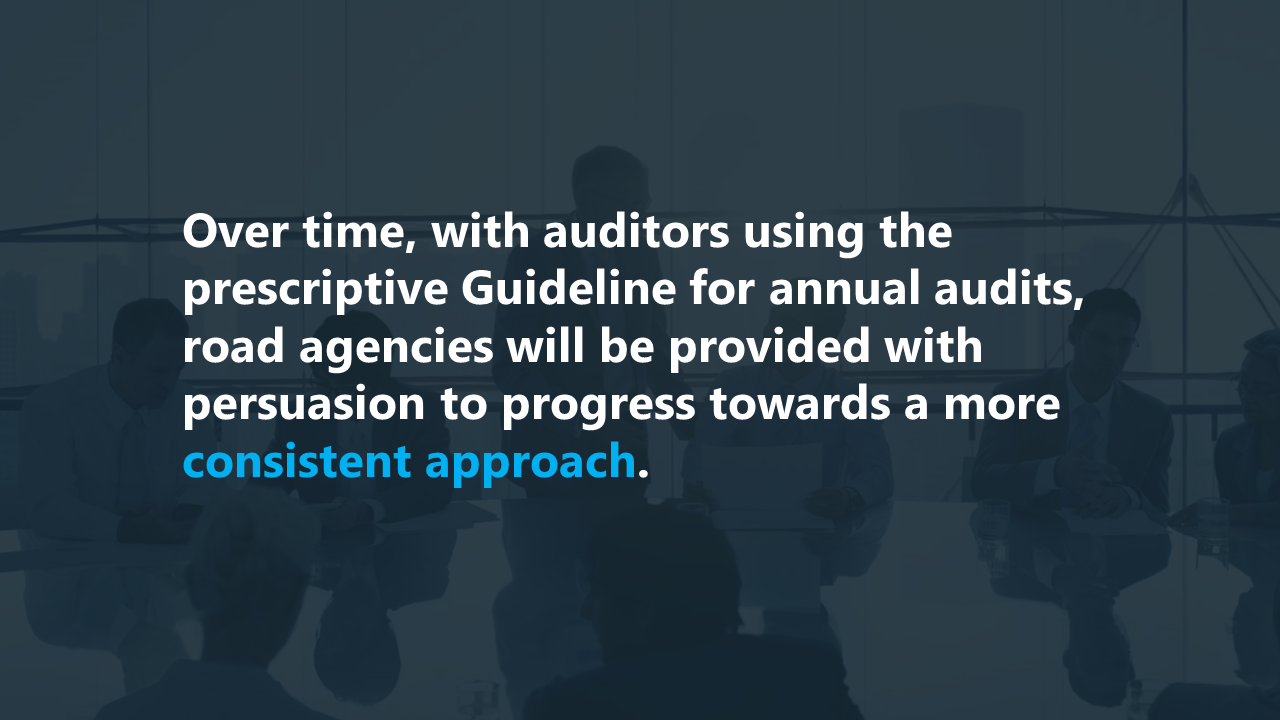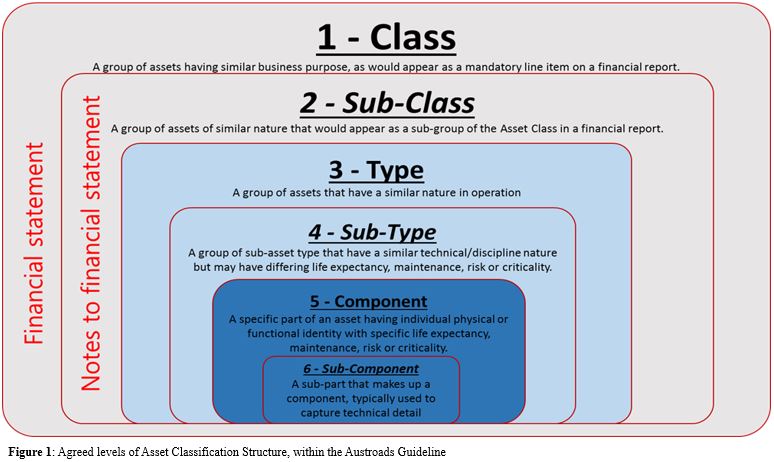
28 March 2019
For decades, in many sectors, asset management was considered a technical engineering function associated with the operations and maintenance phase of an asset lifecycle. The focus was on the asset, its impact on operations, its performance, and the work effort required for its life extension. While these technical pursuits remain critical to asset-intensive businesses, asset integrity functions are more accurately described as maintenance management, not asset management. While, maintenance management will continue to be a core component of the asset management discipline, the modern-day definition extends beyond these historical roots. It has ‘grown up.’
Success now requires integrated and collaborative effort across multiple disciplines; it is no longer confined to technical engineering. Across most sectors, it is agreed that success depends on integration of processes, people, and technology.
The key objectives of Austroads Project AAM2102 was to facilitate improved integration of asset management and financial management in the roads sector, and to enable more efficient collation of national data sets and more equitable national reform initiatives. It resulted in two publications (August 2018):
Minimum Levels of Componentisation for Road Infrastructure Assets: Background Research (AP-R576-18)
Minimum Levels of Componentisation for Road Infrastructure Assets: Guideline (AP-R577-18)
While the Austroads Project focused on the roads sector, its findings are applicable to any sector that manages public infrastructure assets.
Ninety-four percent of stakeholders surveyed by Austroads believed benefits would be achieved if a prescriptive asset componentisation guideline was developed to address important issues such as consistency, comparability, clarity, and accuracy. The AAM2102 publications assert that aligning the disciplines of asset management and financial management can introduce these benefits to organisations:
In order to achieve these benefits, the Guideline (AP-R577-18) identifies the following foundational building blocks for harmonised practices:
Success now requires integrated and collaborative effort across multiple disciplines; it is no longer con-fined to technical engineering. Across most sectors, it is agreed that success depends on integration of processes, people, and technology.
One of the obvious symptoms of a lack of unified thinking in an organisation is the creation of multiple asset registers, not for different asset types, but for different business functions. Organisations may have one asset register for maintenance management, another for financial valuation, and a third for insurance purposes. Due to the inherent duplication of similar data fields, an organisation with multiple asset registers is risking data management inefficiency. Generally, multiple data sets for common data fields result in a lack of access to integrated data that informs business decisions. Improved integration of business functions will require enabling support from information technology.
A key premise of Austroads project AAM2102 is that to enable integration of data sets across different business functions, there must be a single organisational Asset Classification Structure and clarity regarding related terminology:
“The need for alignment is multidimensional for many reasons, particularly because of the alignment of information requirements for different levels and functions within the organisation; this includes the ability to have vertical alignment of the information from top management down into the operational areas, as well as horizontal alignment between asset management, financial accounting, financial management and risk management functions, by using a common terminology for financial and non-financial information.” -ISO/DTS 55010 (Draft Standard)
The Austroads project AAM2102 demonstrated that there is a gap between the ‘in principle’ requirements of accounting standards and their interpretation by road agencies and auditors that inform asset componentisation. In many instances, mandatory financial statement requirements are too broad to practically inform how complex asset portfolios should be componentised via an Asset Classification Structure.
Accounting standards provide a degree of discretion for each entity. Austroads project AAM2102 showed that there was a diverse range of accounting standards interpretations across Australia and New Zealand. The discretion within accounting standards and the lack of prescriptive guidance material has resulted in different interpretations of appropriate levels of asset componentisation.
The preparation of a sector-wide prescriptive Guideline for minimum levels of componentisation provides entities preparing financial statements with a minimum benchmark for information management requirements. Over time, with auditors using the prescriptive Guideline for annual audits, road agencies will be provided with persuasion to progress towards a more consistent approach.
The terminology used in the Austroads Guideline that defines a standardised Asset Classification Structure is transferable across other sectors. They may benefit from the availability of similar prescriptive guidelines, particularly when there is a desire to increase comparability for investment decision-making and benchmarking of performance.


Data categories and data fields used by asset management and financial management practitioners are remarkably similar. Despite this, inconsistencies persist in terminology and language across these two disciplines. Efficient alignment of business functions necessitates the need for clarity regarding terminology.
Surprisingly, there are significantly different interpretations of commonplace terminology used by asset management practitioners. Austroads project AAM2102 confirmed that terminology used across various jurisdictional and industry guidance documents was significantly different, often with the same terms having different meanings.
For example, in AASB standards, Asset Class’s definition is directly related to financial statement reporting requirements. However, asset management practitioners often use the term Asset Class when referring to a significantly lower granularity of asset group. Contradictory perspectives associated with Asset Classification Structure terminology sometimes generate qualifying language such as ‘technical’ asset class and ‘financial’ asset class. Such qualifications drive deeper divisions between disciplines and work against the goal of aligning business functions.
There are significantly different interpretations of commonplace terminology used by asset management practitioners. Sector-wide guidance must address terminology to harmonise approach across organisations. The AAM2102 Austroads Guideline, focusing on terminology clarity, provided a standardised Asset Classification Structure, outlined in Figure 1 (right).

To successfully implement change that improves integration between disiplines, collaboration between business areas will be required. Typically, it will be required between business areas responsible for asset management, financial management, information technology, and financial reporting. Organisations should also collaborate with their auditor (of financial statements) throughout the implementation process.
Integrating financial management and asset management disciplines is a significant undertaking for an organisation. It is generally recommended that such initiatives be treated as business improvement projects, distinguishing them from business-as-usual activity. Business improvement projects that cut across multiple business areas will typically benefit from active, top management sponsorship and steering committee or working group oversight. Executive sponsorship should remain visible throughout the full lifecycle of the project to ensure continued commitment from stakeholders.
The principles within the Austroads Guideline (AP-R577-18) seek to better align the disciplines of asset management and financial management across the roads sector. The Guideline provides foundational building blocks for harmonised practices via a standardised Asset Classification Structure across the industry, prescriptive componentisation, aligned defintions for key terms, a structured process for defining Items, and minimum inventory data requirements.
These core principles are applicable to any sector that manages public infrastructure assets. In particular, the levels of the Asset Classification Structure and associated definitions of key terms are directly transferable, and would provide the basis for adoption of similar guidelines for other sectors.